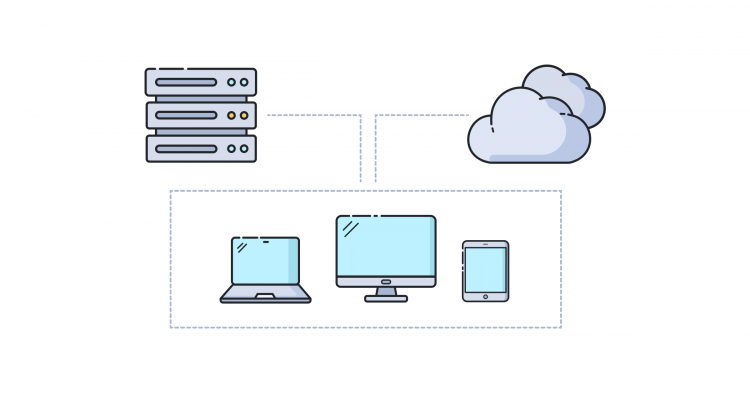Deconstructing the Diverse Virtual Desktop Infrastructure (VDI) Market Segmentation

To fully comprehend the market's intricate structure, a detailed deconstruction of the Virtual Desktop Infrastructure (VDI) Market Segmentation is essential, starting with its segmentation by deployment model. This is the most fundamental distinction, dividing the market into on-premise and cloud-based solutions. The on-premise segment is the traditional model, where an organization builds and manages the entire VDI stack within its own data centers. This model offers the maximum control over security and performance and is still preferred by organizations in highly regulated industries or those with specific data sovereignty requirements. However, the cloud-based segment, often referred to as Desktop-as-a-Service (DaaS), is the largest, fastest-growing, and most important part of the market. In this model, the virtual desktops are hosted on a public cloud provider's infrastructure (like AWS, Azure, or Google Cloud), and the VDI management plane is delivered as a service. This model has democratized VDI, making it accessible and affordable for businesses of all sizes, and is the primary driver of the market's current expansion. A third, hybrid model, which combines on-premise and cloud deployments, is also a significant segment, offering a flexible migration path to the cloud.
Another crucial axis of segmentation is by the type of VDI model, which primarily distinguishes between persistent and non-persistent desktops. A persistent VDI is a one-to-one model where each user is assigned a dedicated virtual desktop that they can customize and that retains all their settings and data between sessions, much like a traditional physical PC. This model is ideal for knowledge workers and developers who require a personalized environment. In contrast, a non-persistent VDI is a one-to-many model where users are assigned a generic, stateless desktop from a pool of identical virtual machines each time they log in. When the user logs out, the desktop is wiped clean and returned to the pool. This model is highly efficient from a management and storage perspective and is ideal for task workers in environments like call centers or classrooms, where personalization is not required. The choice between these two models is a critical design decision that depends on the specific needs of the user base.
Finally, segmenting the market by end-user industry vertical and by organization size provides the most practical and strategic view of the market's application and customer base. The market sees strong adoption across a wide range of verticals. The Healthcare industry is a major adopter, using VDI to provide secure, "follow-me" access to electronic health records for clinicians moving between patient rooms. The Financial Services sector leverages VDI for its strong security and compliance capabilities. The Education sector uses non-persistent VDI to provide students with access to standardized learning environments in computer labs. The segmentation by organization size is also critical. Large enterprises are the traditional customers, with complex, large-scale deployments. However, the Small and Medium-sized Business (SMB) segment is now the fastest-growing part of the market, driven by the accessibility of cloud-based DaaS solutions. Understanding the unique security, compliance, performance, and cost requirements of these different verticals and organization sizes is essential for vendors to tailor their solutions and effectively compete in this diverse and dynamic market.
Sponsor
Sponsor
Categorieën
- AI
- Ontwerp
- Fashion and Art
- Investment and Finance
- Top 10
- Christianity
- Climate and Enviroment
- Writing and Film
- Fitness
- Food
- Spellen
- Gardening
- Health
- Home and Interiors
- Marketing and Sales
- Music
- Making Money Online
- Others
- Books
- Religion
- Ecommerce
- Sports
- Cars
- Wellness
- Tech Gadgets
- Events
- Governments and Nations
- Science and Engineering
- Real Estate
- Travel, Tourism and Hospitality
- Onderwijs
- Startups
- Beauty and Cosmetics
- Agriculture
- Computer Operating Systems
- Crypto
- Politics and News
- Video Review
- Immigration
Read More
Automotive Drive Shaft Market Overview The global automotive drive shaft market size was valued at USD 36.07 billion in 2024 and is expected to grow from USD 37.85 billion in 2025 to reach USD 55.76 billion by 2033, growing at a CAGR of 4.96% during the forecast period (2025-2033). Download Exclusive Research Report PDF Sample: (Including Full TOC, List of...

In the multi-family industry, we throw around the term "rent-ready" a lot. But "rent-ready" is a low-bar, C-class standard. It means the unit is legally habitable: the plumbing works, the lights turn on, and it has been 'broom-swept.' A "move-in ready" standard, however, is what defines a B-class and A-class asset. It is a unit that is not just functional, but desirable. It is pristine, modern,...

The global Sodium Silicate Investment Casting Market is experiencing steady growth, with its valuation reaching USD 245 million in 2024. According to industry projections, the market is expected to expand at a CAGR of 5.1%, reaching approximately USD 348 million by 2032. This upward trajectory is primarily driven by increasing demand from the aerospace, automotive,...

"Executive Summary Sunprotection Products Market Size and Share Forecast CAGR Value Data Bridge Market Research analyses that the sunprotection products market which was USD 13.65 billion in 2022, would rocket up to USD 23.81 billion by 2030, and is expected to undergo a CAGR of 3.5% during the forecast period of 2023 to 2030. With a capable and wide-ranging market research study,...

Resumen ejecutivo del futuro del mercado de arena para gatos de EE. UU. y México : tamaño y dinámica de participación Se espera que el mercado de arena para gatos de EE.UU. UU. y México crece entre 2023 y 2030. Data Bridge Market Research analiza que el mercado está creciendo con una CAGR del 4,1 % en el período de pronósticos de...


